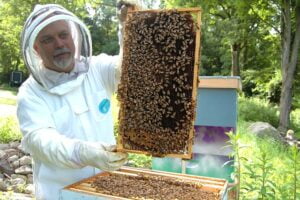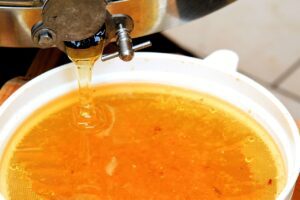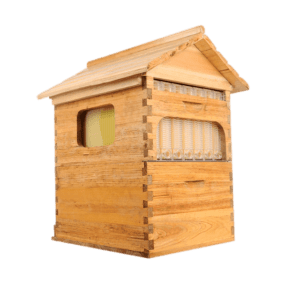The Langstroth hive is a cornerstone of modern beekeeping, offering an efficient and manageable system for both novice and experienced beekeepers. This innovative design has revolutionized apiculture practices and continues to be a popular choice for many beekeepers worldwide. Understanding the Langstroth hive’s unique features and proper management techniques is crucial for maximizing its benefits and ensuring the health and productivity of your bee colonies.
Table of Contents
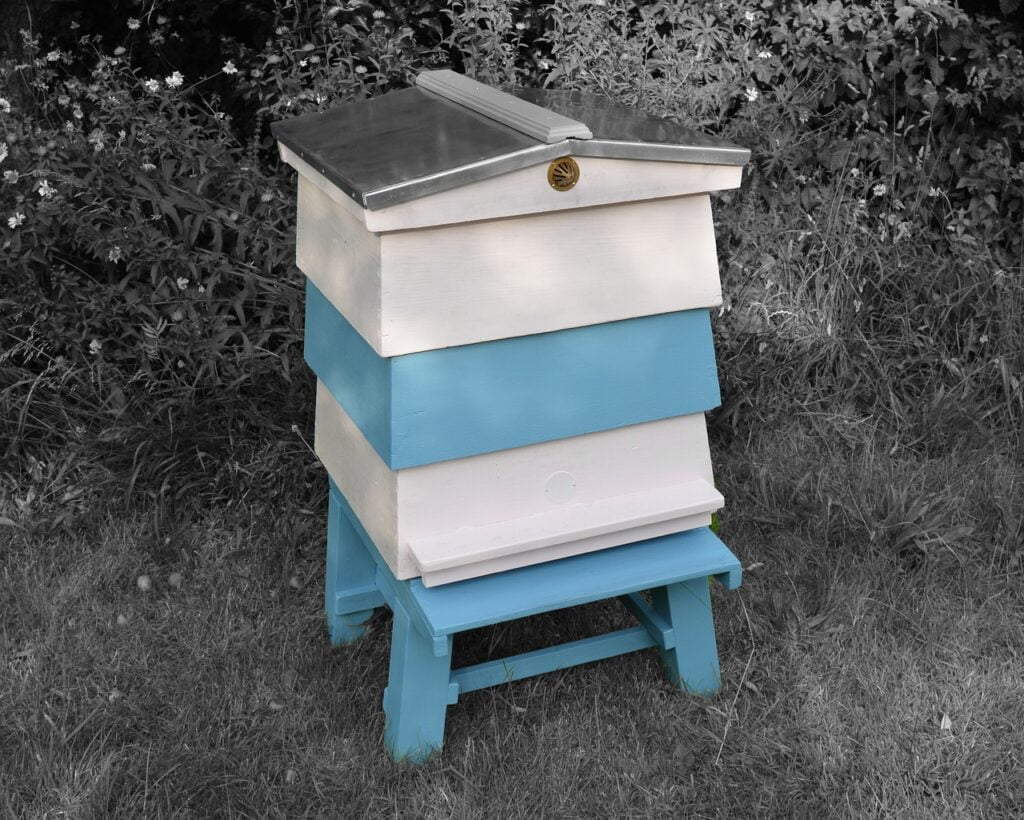
What are the Langstroth Hives?
The Langstroth hive, created by Reverend Lorenzo Langstroth, is well-known for its modular design that simplifies inspections and honey extraction. It features stacked rectangular boxes with removable frames holding honeycomb. This standardized structure ensures compatibility and ease of use, making hive management more straightforward and supporting the health and productivity of bee colonies.
Langstroth Hive Plans
How to Build a Langstroth Hive
Building a Langstroth hive requires attention to detail to ensure proper bee space and functionality. Follow these steps:
- Gather Supplies: Pine or cedar wood, nails, screws, and hive components. Pine is commonly used due to its availability and cost, while western red cedar offers durability and resistance to decay.
- Cut Wood to Dimensions: Ensure accurate measurements for each hive part, including the bottom board, brood boxes, and hive entrance.
- Assemble Components: Use nails or screws to construct the boxes, frames, covers and bottom board ensuring a tight fit to protect the bees and maintain the hive’s integrity.
- Finish and Paint: Protect the beehives with a coat of bee-safe paint or sealant. A wax coating can also be applied to protect the wood and promote longevity.
Langstroth Hive Dimensions
The Langstroth hive typically consists of the following components:
| Component | Description | Dimensions |
|---|---|---|
| Hive Stand | Elevates the hive 6 to 12 inches off the ground to protect it from damp conditions and pests. | 6 to 12 inches in height |
| Bottom Board | Serves as the hive’s floor, providing a solid foundation for the hive. | 22 inches by 22 inches |
| Brood Boxes | Used for raising brood. | 19 7/8 inches by 16 1/4 inches by 9 5/8 inches (deep) |
| Supers | Boxes for honey storage. | Shallow: 19 7/8 inches by 16 1/4 inches by 6 5/8 inches<br>Medium: 19 7/8 inches by 16 1/4 inches by 9 5/8 inches |
| Frames | Removable structures within the boxes that hold the comb and foundation. | 19 7/8 inches by 1 1/2 inches |
| Inner Cover | Provides insulation and ventilation within the hive box. | 22 inches by 22 inches |
| Top Cover | Protects the hive from the elements and can be lifted off for inspections. | 22 inches by 22 inches |
The Importance of Hive Body and Super Configuration
Configuring your hive body and supers correctly can significantly impact hive management and honey production. Using shallow boxes, medium boxes, and deep brood boxes allows for flexibility in beehive management and honey storage.
- Deep Brood Boxes: Provide ample space for brood rearing and honey storage.
- Medium and Shallow Boxes: Easier to handle and ideal for honey supers.
10 Frame vs. 8 Frame Hives
| Feature | 10 Frame Hive | 8 Frame Hive |
|---|---|---|
| Dimensions | About 19 7/8 inches x 16 1/4 inches per box | About 19 7/8 inches x 14 1/4 inches per box |
| Capacity | Holds 10 frames, more space for honey and brood | Holds 8 frames, less space than 10-frame hives |
| Weight | Heavier, more cumbersome to handle | Lighter, easier to manage and inspect |
| Honey Production | Potentially higher honey yield | Slightly lower honey yield |
| Cost and Equipment | Generally more expensive, requires larger equipment | More affordable, uses smaller equipment |
| Suitability | Best for an experienced beekeeper and commercial use | Best for beginners and those seeking easier handling |
Incorporating a Queen Excluder
A queen excluder is what a beekeeper uses for managing hive productivity. They prevent the queen from laying eggs in honey supers, ensuring that honey is harvested without brood contamination.
- Placement: Install queen excluders between brood boxes and honey supers.
- Types: Available in plastic or metal, each with unique benefits.
The Role of the Hive Entrance and Reducers
Managing the beehive entrance is crucial for colony health and productivity. An entrance reducer controls the size of the entrance, helping to protect the colony from mice and extreme weather conditions.
- Seasonal Adjustments: Use an entrance reducer during winter to minimize cold drafts.
- Pest Control: Helps prevent robbing by other bees and rodents.
Utilizing Inner and Top Covers
Covers are crucial for maintaining hive health in a Langstroth beehive. The inner cover helps regulate the hive’s temperature and humidity by creating a buffer between the hive body and the top cover. The inner cover improves airflow, reduces moisture buildup, and provides extra insulation during colder months to keep the bees warm.
The top cover shields the bee hive box from external weather conditions like rain, snow, and sun. Made from weather-resistant materials, the outer cover ensures the hive remains protected from harsh elements, contributing to the bees’ safety and hive durability. Together, these covers help maintain a stable environment and support effective hive management.
Choosing the Right Hive Box Materials
When building a Langstroth hives, selecting the right materials is crucial. Beekeepers opt for pine or western red cedar due to their durability and cost-effectiveness. Western red cedar, in particular, is known for its resistance to decay, making it an excellent choice for long-lasting beehives.
- Pine: Affordable and readily available, but may require more maintenance.
- Western Red Cedar: Durable and resistant to decay, ideal for long-term use.
By following these plans, you can create a durable and efficient hive box design that will serve your beekeeping needs for years to come. Building your beehives allows for customization to fit specific beekeeping practices and local environmental conditions.
12 Tips for Mastering the Langstroth Hive in Beekeeping
1. Understand Langstroth Hive Dimensions
Knowing the exact dimensions of each component ensures compatibility and efficiency. Proper measurements help maintain bee space, which is crucial to promote growth, reduce the necessity of propolis and increase productivity. The standard Langstroth hive’s dimensions must be followed closely to ensure that components such as the bottom board, frames, and entrance work together seamlessly.
- Research standard measurements for the brood box and supers.
- Use precise tools to cut and assemble parts.
- Verify that bee space is maintained to prevent issues with comb building.
2. Proper Frame Placement
Correct frame placement is essential for maintaining bee hive health and productivity. Properly positioned frames prevent comb irregularities and improve the efficiency of bee activities, making inspections and honey extraction smoother.
- Comb Replacement: Replace old, unproductive comb to prevent buildup and promote healthy brood development.
- Even Frame Placement: Place evenly within each box to ensure optimal bee space and functionality.
- Frame Spacing: Ensure they are tightly spaced to maintain proper bee space. Utilize frame spacers if necessary to keep frames aligned.
- Frame Rotation: Regularly rotate to maintain bee hive health. Remove old or damaged frames and replace them with new ones to keep the colony functional and productive.
- Comb Maintenance: Clean and repair frames as needed. Store unused frames in a dry, pest-free environment to ensure they remain in good condition.
3. Regular Hive Inspections

Regular hive inspections are vital for maintaining health and productivity. Frequent checks, ideally every 7-10 days during peak seasons, help you spot and address issues early, preventing them from escalating. Monitoring conditions closely ensures that the bees remain healthy and the bee hive stays productive.
During inspections, check for signs of queen health and new brood, and record your observations to track progress. Look out for diseases like foulbrood and manage pests such as Varroa mites and small hive beetles using integrated pest management techniques. These practices help keep your hives in optimal condition.
4. Efficient Honey Extraction
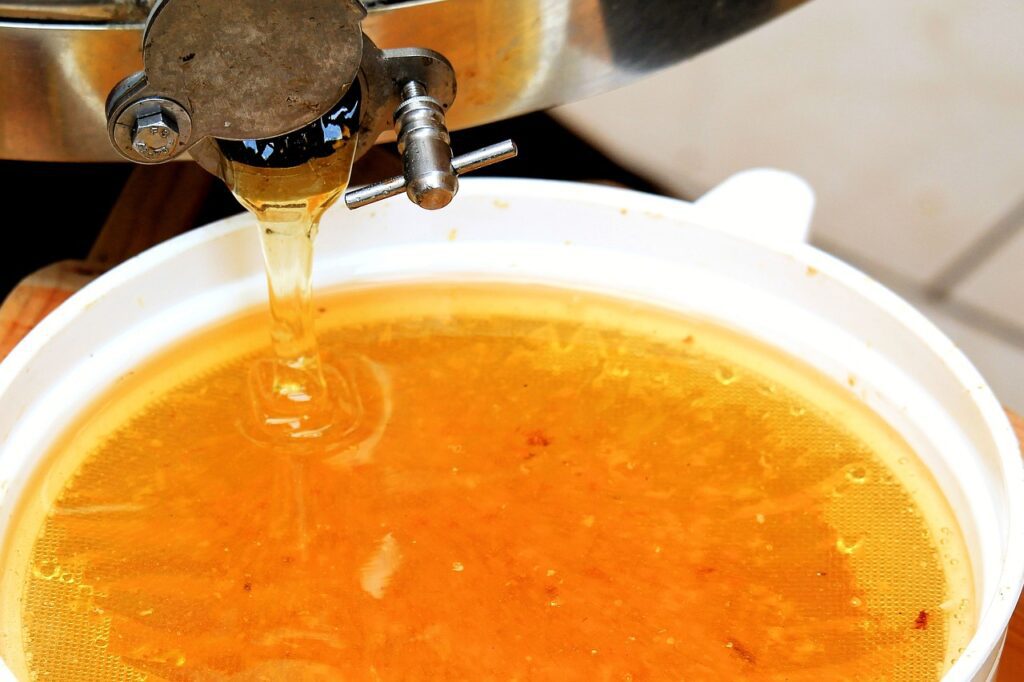
Efficient honey extraction is key to minimizing stress on bees and maximizing yield. Using a honey extractor designed for Langstroth frames ensures a smoother process and better results.
Make sure frames are fully capped before extraction to avoid extracting unripe honey. Handle frames gently to prevent damaging the comb, maintaining hive health and optimizing honey production.
5. Seasonal Hive Management
Adapting bee hive management practices to seasonal changes is crucial for maintaining hive health and productivity throughout the year.
- Seasonal Adjustments: Tailor management practices based on the season to maintain hive resilience and productivity. This includes managing airflow with entrance reducers and preparing the hives for changing weather conditions.
- Summer Management: Increase ventilation to prevent overheating during hot weather and ensure the hives have enough space to accommodate the growing colony.
- Winter Preparation: Insulate the hives to protect bees from cold temperatures. Reduce the entrance to shield the bee hive box from harsh winds and adjust feeding practices based on nectar availability.
6. Pest and Disease Control

Maintaining pest-free hives is essential for ensuring the health and longevity of your bee colonies. Effective pest and disease management strategies are crucial for preventing infestations and protecting the bees. Regular monitoring for common invaders such as ants and small hive beetles can help catch problems early before they escalate. Implementing integrated pest management (IPM) strategies allows for a comprehensive approach to controlling them while minimizing harm while keeping bees.

Prompt action and judicious use of treatments are necessary to address infestations without negatively impacting the colony. By staying vigilant and using targeted interventions, beekeepers can keep Varroa mites and other diseases at bay, ensuring the continued health and productivity of their bee hives.
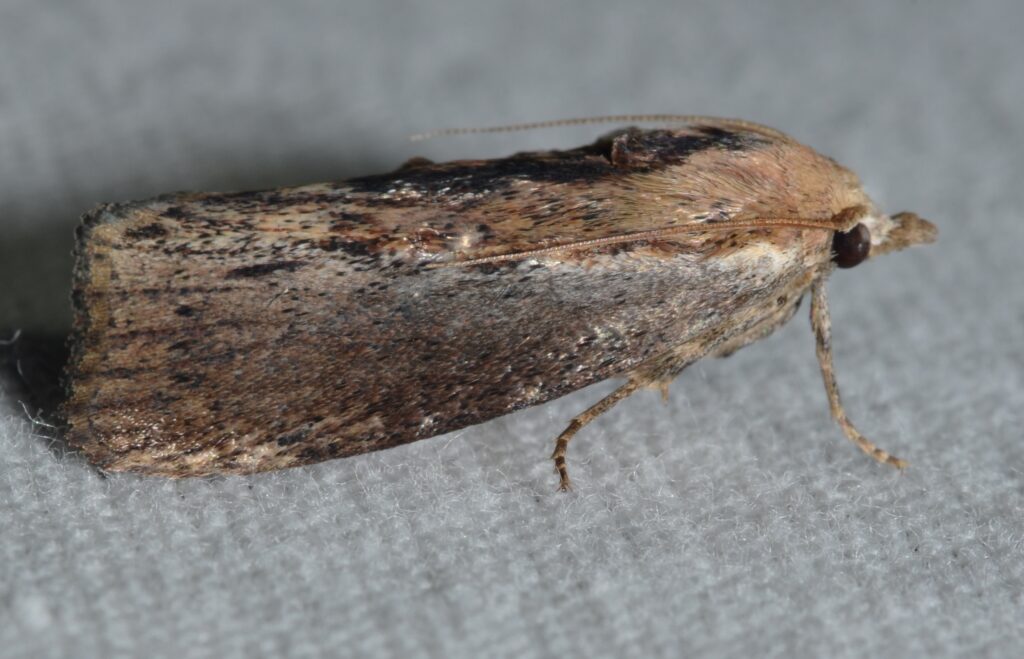
7. Swarm Prevention
Preventing swarms is crucial for maintaining a healthy bee hive and ensuring productivity. Effective swarm management keeps your colony intact and operating efficiently. Techniques such as splitting hives or adding supers provide extra space for worker bees, helping to control a hives population and reduce swarming risks.
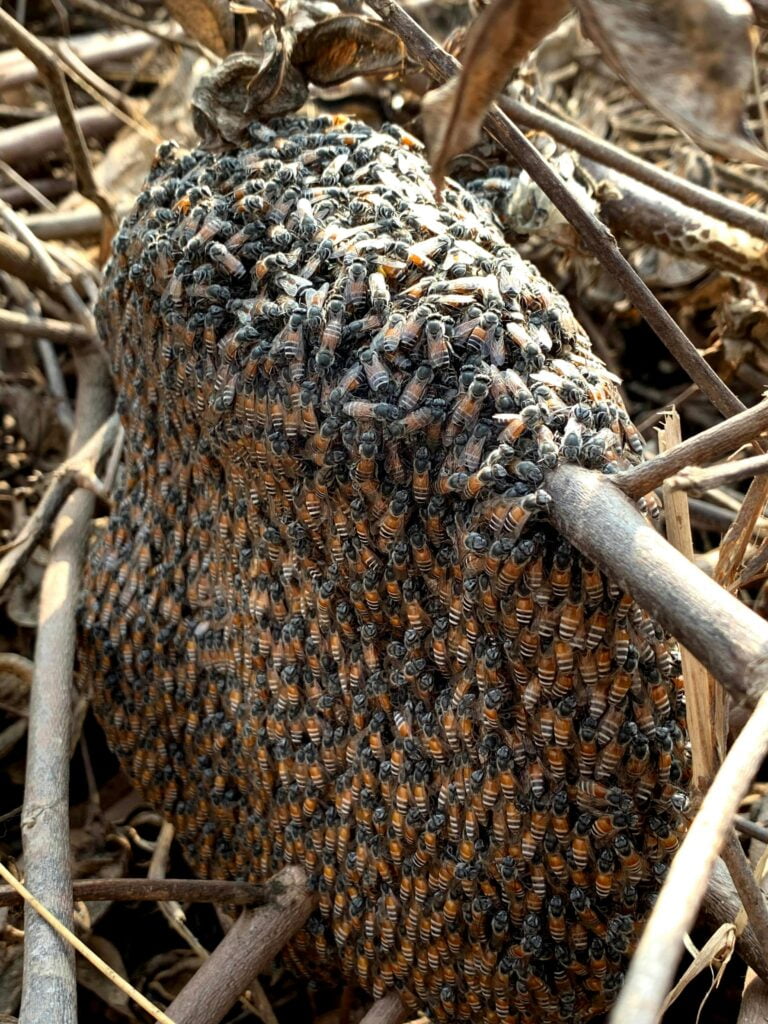
Regular inspections for swarm cells are essential. By checking for these cells and addressing any signs of swarming early, you can prevent the colony from splitting. Additionally, managing space within the hives for expansion and honey storage helps accommodate colony growth and further minimizes the chances of swarming.
8. Proper Ventilation
Proper ventilation prevents moisture buildup and overheating, promoting a healthy bee hive environment. Using screened bottom boards and adjusting hive entrances can significantly improve airflow.
Enhance airflow with screened bottom boards and adjust entrances to suit seasonal conditions. Installing ventilation holes or devices in hive covers also helps maintain optimal conditions inside the hive.
9. Feeding Your Bees
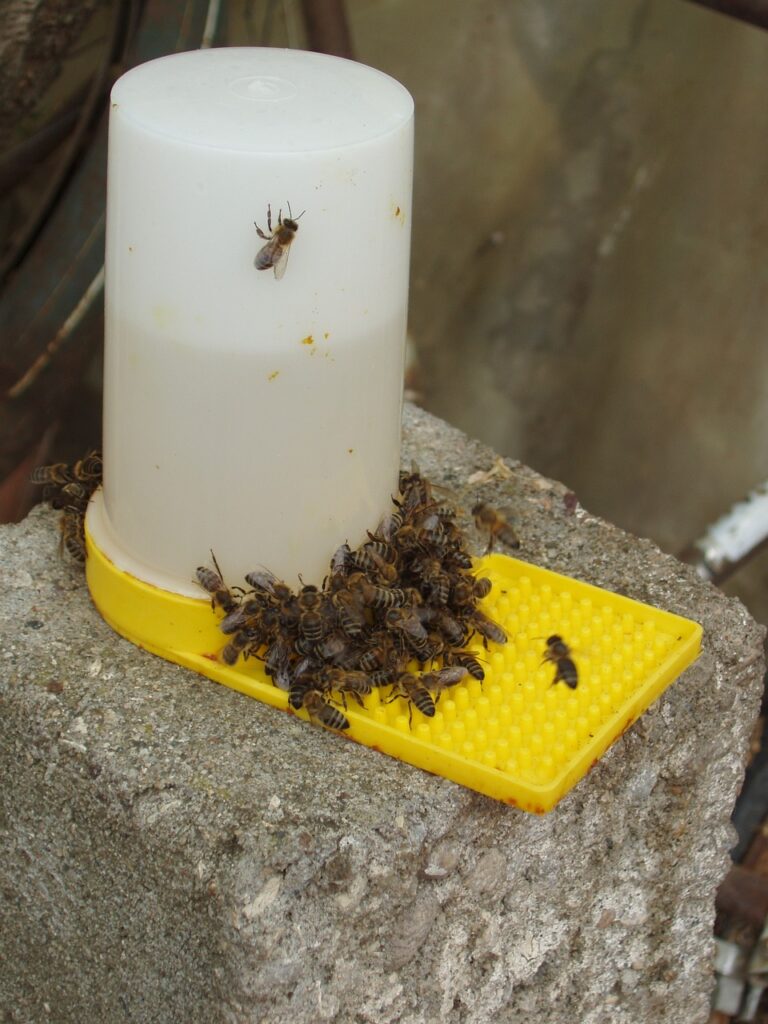
Feeding your bees is crucial, especially during nectar shortages, to ensure their survival and productivity. Providing supplemental food like sugar syrup or pollen substitutes based on the season and hive needs helps maintain colony health.
Use feeders designed for Langstroth hives and provide sugar syrup in spring and fall. Add pollen substitutes to boost protein intake and ensure fresh water is available. Monitor feeding to avoid overfeeding and robbing behavior, maintaining a balanced and healthy bee hive.
10. Hive Location
Selecting the right location for your hives is crucial for their success. Ideally, choose a site with good sun exposure and protection from wind to create a favorable environment for your bees.
Ensure the location allows easy access for regular inspections and maintenance. Avoid placing hives in areas with heavy pesticide use to protect your bees from harmful chemicals.
11. Frame Maintenance
Maintaining frames is crucial for prolonging their lifespan and ensuring hive efficiency. Regular frame maintenance, including rotating out old frames and repairing or replacing damaged ones, helps keep the hive design functional and productive. Properly maintained frames are essential for bees to build comb effectively and maintain a healthy bee hive environment.
Additionally, storing unused frames in a dry, pest-free environment prevents damage and extends their usability. Regular cleaning and repairs further contribute to the hive’s overall health, supporting the bees’ productivity and comfort.
12. Support Surrounding Communities and Promoting Environmental Sustainability
Beekeeping positively impacts communities and can protect ecosystems. A single hive can enhance local pollination, benefiting ecosystems and supporting biodiversity.
By maintaining healthy colonies, beekeepers support local agriculture and food systems. Bees improve crop yields and quality, benefiting farmers and communities. Engaging with local communities to raise awareness about bees and promote beekeeping practices further strengthens these benefits.
Bees play a role in pollinating plants essential for a balanced diet, including fruits, vegetables, and nuts. This pollination supports not only local food supplies but also overall ecosystem health.
Beekeepers also contribute to environmental sustainability by advocating for practices that protect habitats and combat issues like habitat destruction. Supporting conservation efforts and raising awareness about environmental challenges help preserve bee populations and biodiversity.
Conclusion
Mastering Langstroth hives involves understanding its components, proper maintenance techniques, and the broader impact of beekeeping on the environment and communities. By implementing effective management practices, a beekeeper can ensure the health and productivity of their colonies, while also contributing to environmental sustainability and community support. Whether you are a novice or an experienced beekeeper, applying these principles will help you achieve success in beekeeping and make a positive impact on the world around you.

